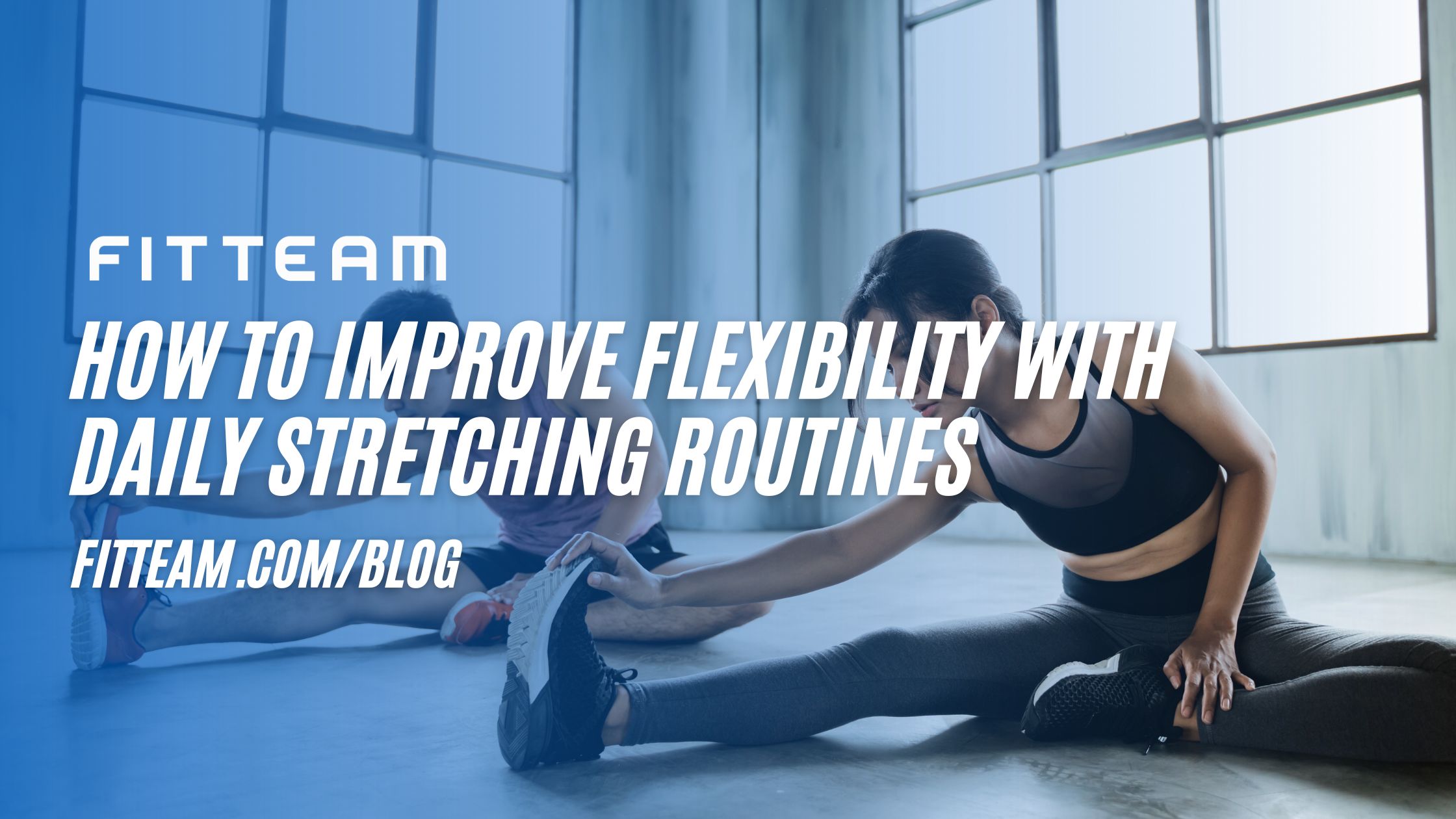
02 Sep How to Improve Flexibility with Daily Stretching Routines
How to Improve Flexibility with Daily Stretching Routines
Flexibility is a crucial aspect of overall fitness, contributing to better posture, reduced muscle tension, and a lower risk of injuries. Whether you’re an athlete, a gym enthusiast, or someone looking to improve mobility in everyday life, incorporating daily stretching routines can make a significant difference. In this blog, we’ll explore how to improve flexibility with daily stretching, including the types of stretches, the best time to stretch, and how to develop a routine that fits into your schedule.
Why Flexibility Matters
Flexibility isn’t just about touching your toes or doing the splits; it plays a vital role in your body’s functionality. Improved flexibility can lead to:
- Enhanced Athletic Performance: Better flexibility allows for a fuller range of motion, which can improve your performance in various sports and physical activities.
- Injury Prevention: Flexible muscles and joints are less prone to injuries such as strains and sprains.
- Reduced Muscle Soreness: Regular stretching can alleviate muscle tension and soreness after workouts.
- Improved Posture: Flexibility helps maintain the balance of muscle groups, leading to better posture and alignment.
Types of Stretches for Flexibility
To maximize flexibility gains, it’s essential to incorporate different types of stretches into your routine. Here are the most effective types:
- Static Stretching:
- Involves holding a stretch for 15-60 seconds in a comfortable but challenging position.
- Ideal for increasing flexibility in specific muscles and joints.
- Best performed after a workout when your muscles are warm.
- Dynamic Stretching:
- Involves moving parts of your body through a full range of motion in a controlled manner.
- Great for warming up before workouts or sports activities.
- Helps improve flexibility while also preparing your muscles for action.
- PNF Stretching (Proprioceptive Neuromuscular Facilitation):
- Combines static stretching and isometric contractions to improve flexibility.
- Usually requires a partner or a resistance band.
- Highly effective for increasing range of motion, especially in rehabilitation settings.
- Ballistic Stretching:
- Involves using momentum to push your body beyond its normal range of motion.
- Generally not recommended for beginners due to the risk of injury.
- Can be effective for advanced athletes when used cautiously.
Creating a Daily Stretching Routine
Consistency is key to improving flexibility. Here’s how to develop a daily stretching routine that works for you:
- Identify Your Target Areas:
- Focus on areas where you feel tight or where you want to improve flexibility. Common target areas include hamstrings, hip flexors, shoulders, and lower back.
- Allocate Time:
- Dedicate at least 10-15 minutes daily to your stretching routine. Morning or post-workout are ideal times.
- Warm-Up First:
- Always start with a light warm-up, such as walking or jogging for 5 minutes, to increase blood flow to your muscles.
- Mix It Up:
- Incorporate a combination of static, dynamic, and PNF stretches to target different muscle groups effectively.
- Listen to Your Body:
- Stretch to the point of mild discomfort, not pain. Overstretching can lead to injuries.
- Progress Gradually:
- As your flexibility improves, gradually increase the duration and intensity of your stretches.
Example Daily Stretching Routine
Here’s a sample routine you can follow:
- Warm-Up (5 Minutes):
- Light jogging or brisk walking.
- Dynamic Stretches (5-10 Minutes):
- Arm Circles: 2 sets of 10 reps per arm.
- Leg Swings: 2 sets of 10 reps per leg.
- Hip Circles: 2 sets of 10 reps per direction.
- Static Stretches (10-15 Minutes):
- Hamstring Stretch: Hold for 30 seconds per leg, repeat twice.
- Quadriceps Stretch: Hold for 30 seconds per leg, repeat twice.
- Shoulder Stretch: Hold for 30 seconds per arm, repeat twice.
- Butterfly Stretch: Hold for 30-60 seconds.
- Cool Down (5 Minutes):
- Deep breathing exercises to relax your muscles.
Conclusion
Improving flexibility with daily stretching routines is a rewarding process that enhances your physical performance, reduces injury risks, and improves overall well-being. By incorporating a variety of stretching techniques and remaining consistent, you’ll notice significant improvements in your flexibility over time. Start small, stay consistent, and enjoy the journey towards a more flexible and functional body.
Sources:
- www.health.harvard.edu/staying-healthy/stretching-a-research-retrospective
- www.mayoclinic.org/healthy-lifestyle/fitness/in-depth/stretching/art-20047931
- www.acefitness.org/education-and-resources/lifestyle/blog/6553/stretching-essentials
- www.cdc.gov/physicalactivity/basics/stretching
- www.nhs.uk/live-well/exercise/why-sitting-too-much-is-bad-for-us

